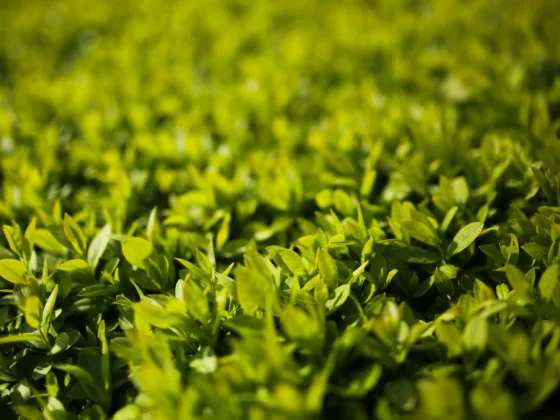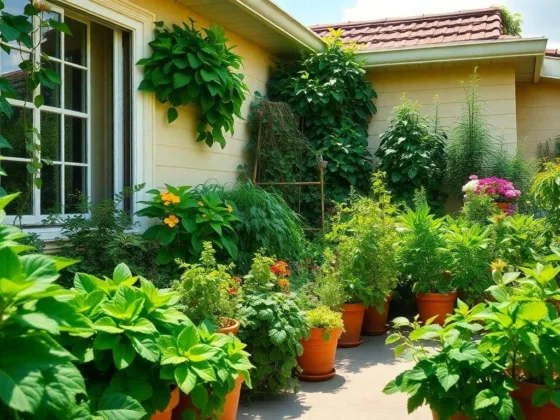Table of Contents Show
In quarantine now, people have become more conscious about themselves and the environment around too. Some are returning to redo their garden, and others have just picked up planting and gardening as a hobby.
So, with or without any competition of whose lawns are best, some just want to do it for inner peace.

Waking up to a beautiful, well-cared-for lawn every morning gives you a sense of contentment and also keeps you busy – especially when you have nothing to do in this lockdown period.
Of course, keeping the lawn looking so good isn’t that easy and takes time, patience, effort, and research.
Before you begin caring for a lawn, you will have your very own user-friendly lawnmower. If you want to keep your lawn looking fresh and green, lawnmowers can be your best friend.
You can check out some of the brands, their pros and cons, and the prices to make an informed decision, from this link:
https://thelawnmowingking.com/
Read Also:
Soil Preparation
Soil is an essential foundation for grass seed to grow. Therefore, when you start preparing for a lawn, scoop up a cup of soil from every corner and place to check the area’s pH level.
The scale of the pH level ranges from 1 – 14, where 7 is neutral. Less than 7, the soil is said to be acidic, whereas more than 7, the soil is alkaline.
Usually, most grass seeds prefer a neutral ph level for it to grow. So, when you get the soil tested, you’ll be able to figure out what type of grass seeds you’d like to get for your lawn and where to plant them.
You can also neutralize your soil on your own. If your soil turns out to be less than 6, it means it’s acidic, and to increase the level, you can add lime to the soil. If your soil is more than 7, it is alkaline, so to lower it, you can add sulfur to the soil.
If you have doubts about the amount of lime or sulfur to add, you can contact any nearby nursery and ask them for help.
Groom Your Soil
After checking the pH, you need to start rototilling your soil for your grass to germinate and increase their lifespan. You can, of course, use a rake or shovel and do it manually, but it’ll take a longer time to do it.
Rototilling it to about 6 inches would get the roots and weeds out, and then you can also try out using loam (which is equal parts of sand, clay, silt) and compost the mixture to enrich your soil.
Using a metal rake, you start grooming your soil, and then your soil will be ready for planting some grass seeds and turn your front or backyard into a lush green lawn in weeks.
Types of Grass Seeds
There are many types of grass seeds to choose from, but each has a different and distinct feature. Some grow better under the long hours of sunlight, while others prefer shaded areas.
Some grasses prefer a warmer temperature to grow while others prefer cooler temps.
So, before purchasing grass seeds, you need to take the sun/shade ratio and temperature of your area into account.
Grass seeds such as Ryegrass, Fescues, Bentgrass, Bluegrass are perfect for a cool climate environment. Bermuda, Bahia, Carpet, Buffalo, Zoysia are warm-season grass seeds and grow better in those environments.
Lawn Caring
Watering & Fertilizing
After your soil testing, seeding, watering, and fertilizing, the next step would be to care for it regularly. If you start from the beginning, the seeds need to be watered after every 10 minutes or until the seeds start sprouting.
Later, you can extend it to 20 minutes. Usually, a well-cared lawn doesn’t require regular or every day watering. Watering once a week is more than enough for the soil to nourish and for the seeds to grow.
This watering also depends on the type of soil of your lawn. If you are working with sandy-typed soil, more water is required. However, if you use clay-typed, less water is enough as it can retain moisture for long periods.
For fertilizing, you can use organic ones such as leaf mulch or compost to increase the soil’s ability to retain water.
Micronutrients such as copper, iron, and sulfur make up a good fertilizer, and it is recommended to fertilize your lawn twice a year.
Prevent Weeds
Weeds keep growing back again and again unless you regularly mow the lawn, at least the top third of the grass. That way, the weeds will be swept up before spreading its seeds.
If it still becomes difficult to keep out weeds, herbicides can be natural and pet and children friendly.
Another advice is to keep changing your soil. Weeds grow faster in the soil that remains unchanged for a long time.
So, keep some grass seeds in a cool corner, and when there are any places that the weeds were pulled, leaving behind a patch of soil, spread the seeds and start watering.
Aerate Your Lawn
If you have pets and kids, then your lawn is indeed being stamped on a couple of times every day. For this reason, you need to use an aerator to make “holes” in your lawn for water and fertilizer to pass through.
You can use hand aerators that may take a long time or get creative and attach long nails at the bottom of your shoe or boot and walk along with the lawn.
Here too, aerating depends on the type of soil. If the soil is sandy, aeration is required once a year, and if it is clay-type, twice a year of aeration is sufficient.
Lawn work is not the easiest, and you need a lot of patience and effort to make it look beautiful. However, if you think there is a shortcut way to all this, yes, there is. Artificial grass can be put up on your lawn and make it look like the real thing.
Regular maintenance is not needed for this, so you can just install it and relax. However, if you want the real deal and invite mother nature to your backyard, you will need natural grass!










